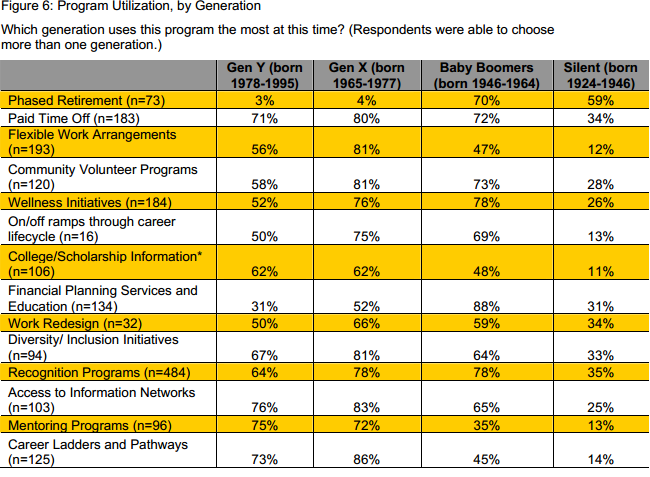What Each Generation Wants from Employers

And if organizations are to engage effectively with this multi-generational candidate marketplace, and have access to talent across the generational sphere, they need to build an employment brand and hiring process that is attractive to the needs and preferences of each generation. A truly multi generational employer brand should help an organization to maximize its ability to attract and retain staff.
But, what does a multi-generational employer brand look like? It needs to reflect the individual needs and wants of each generation and combine them into a coherent employer brand strategy and offering. But, what does each generation want? Let’s be clear up front: Generational requirements are fundamentally very similar, in that they all want to have pay, benefits and a job to suit. But, there are subtle differences and variations in the generational preferences, which should not be ignored. For example:
Millennials; Work-life balance and international experience
A recent study by PWC, the London Business School and the University of California interestingly found that millennials would select flexible working, work-life balance, and the chance for overseas assignments above financial rewards. This was different to the older generations who prioritize pay and developmental opportunities.
The NextGen Survey,which looked at 44,000 employees found that millenials were more loyal if they felt, “supported, appreciated and part of a cohesive team.” As well as this, the world-at-work survey, Rewarding A Multi-Generational Workforce, showed that millennials (along with Generation X), are the biggest users of mentoring services within firms by some way.
Generation X – Career Active and Raising Families
Looking at the world-at-work survey, Generation Xers are now most likely to be raising families and are understandably the biggest users of flexible working (81%), compared to Millennials (56%), Boomers (47%) and Veterans (12%). They are also the biggest users of community volunteer programs by some way and also the biggest users of career development services by some considerable way. Along with Baby Boomers, they are the biggest users of wellness initiatives
Baby Boomers – Phased Retirement and Financial Planners
Baby boomers are realizing that they may need to work into retirement to sustain their desired standard of living. Their focus is on phased retirement; so, if you want to attract this generation, develop part-time roles, non-exec roles and mentoring roles that baby boomers can engage in as part of a phased retirement plan. They are also the biggest users of financial planning and education services by some way (88%), compared to Gen X (52%), and Veterans (31%). Also, along with Gen X, they are biggest users of wellness initiatives.
Veterans – Satisfied and Easy to please
The world-at-work survey showed that Veterans are the smallest users of employer offerings by some considerable way, suggesting they are satisfied and largely easy to please. Average uptake of employers services is sitting somewhere around the 25 percent mark, compared to around 60 percent for the other three generations. This means they are the least demanding. However, veterans are the standout second biggest users of phased retirement services as you would imagine.
Similarities
Having talked about all these differences, it’s important to stress that the generational preferences are not in total conflict. In fact, there are many commonalities, as you can see in the tabulated summary excerpt from the world-at-work survey.
It’s clear from these employment data that most generations make use of most services offered; so, to make a truly multi-generational offering, you need to make sure to offer a balance of employee services that account for the individual priorities of each generation.


